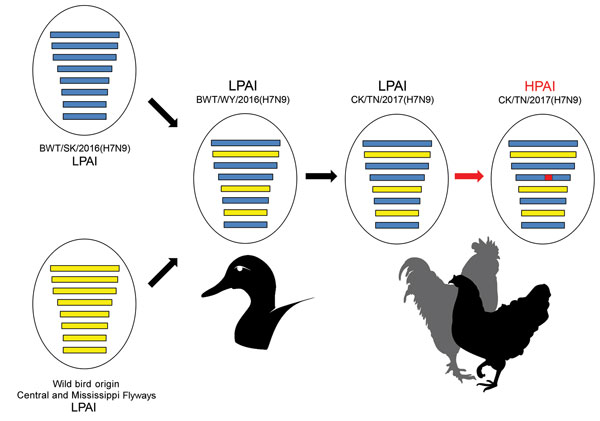Volume 23, Number 11—November 2017
Dispatch
Highly Pathogenic Avian Influenza A(H7N9) Virus, Tennessee, USA, March 2017
Figure 1

Figure 1. Genome constellation of influenza A(H7N9) viruses. Viruses are represented by ovals containing horizontal bars that represent the 8 influenza gene segments (from top to bottom: polymerase basic 2, polymerase basic 1, polymerase acidic, hemagglutinin, nucleoprotein, neuraminidase, matrix, and nonstructural). A genome reassortment event between the H7N9 virus from Saskatchewan, Canada (blue segments) and viruses from wild birds of the US Central and Mississippi Migratory Flyways (yellow segments) led to the genome assortment present in the Wyoming LPAI virus (BWT/WY/2016). The genome constellation of BWT/WY/2016 is the same as those of the Tennessee H7N9 viruses. A red bar in the hemagglutinin gene of the HPAI virus indicates the insertion at the hemagglutinin cleavage site. HPAI, highly pathogenic avian influenza; LPAI, low pathogenicity avian influenza.